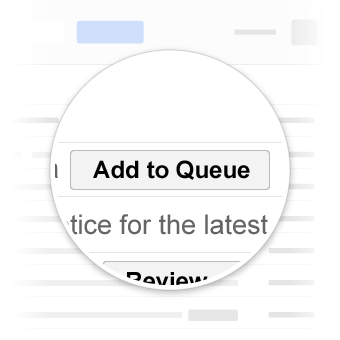One-click actions allow users to perform operations directly from the inbox without having to leave Gmail. One-click actions are performed by declaring an HttpActionHandler
with your service URL. For more details, refer to Handling Action Requests
.

One-click actions in Gmail.
Use Cases
One Click actions currently supported in Gmail are:
Confirm Action
You may add a one-click confirm button to emails requiring users to approve, confirm and acknowledge something. Once the user clicks on the button, an http request will be issued from Google to your service, recording the confirmation. ConfirmAction
can only be interacted with once.
The following declaration adds a ConfirmAction
button to an email about an expense report:
JSON-LD
< scrip
t
t
ype=
"application/ld+json"
> {
"@context"
:
"http://schema.org"
,
"@type"
:
"EmailMessage"
,
"potentialAction"
:
{
"@type"
:
"ConfirmAction"
,
"name"
:
"Approve Expense"
,
"handler"
:
{
"@type"
:
"HttpActionHandler"
,
"url"
:
"https://myexpenses.com/approve?expenseId=abc123"
}
},
"description"
:
"Approval request for John's $10.13 expense for office supplies"
}
< /scrip
t
>
Microdata
< div
itemscope
itemtype
=
"http://schema.org/EmailMessage"
>
< div
itemprop
=
"potentialAction"
itemscope
itemtype
=
"http://schema.org/ConfirmAction"
>
< meta
itemprop
=
"name"
content
=
"Approve Expense"
/
>
< div
itemprop
=
"handler"
itemscope
itemtype
=
"http://schema.org/HttpActionHandler"
>
< link
itemprop
=
"url"
href
=
"https://myexpenses.com/approve?expenseId=abc123"
/
>
< /
div
>
< /
div
>
< meta
itemprop
=
"description"
content
=
"Approval request for John's $10.13 expense for office supplies"
/
>
< /
div
>
Save Action
SaveAction
can be used to describe interactions like saving a coupon or adding songs to the listen queue. SaveAction
can only be interacted with once.
The following declaration adds a SaveAction
button to an email about an offer:
JSON-LD
< scrip
t
t
ype=
"application/ld+json"
> {
"@context"
:
"http://schema.org"
,
"@type"
:
"EmailMessage"
,
"potentialAction"
:
{
"@type"
:
"SaveAction"
,
"name"
:
"Save Offer"
,
"handler"
:
{
"@type"
:
"HttpActionHandler"
,
"url"
:
"https://offers-everywhere.com/save?offerId=xyz789"
}
},
"description"
:
"$5 meal at Joe's Diner"
}
< /scrip
t
>
Microdata
< div
itemscope
itemtype
=
"http://schema.org/EmailMessage"
>
< div
itemprop
=
"potentialAction"
itemscope
itemtype
=
"http://schema.org/SaveAction"
>
< meta
itemprop
=
"name"
content
=
"Save Offer"
/
>
< div
itemprop
=
"handler"
itemscope
itemtype
=
"http://schema.org/HttpActionHandler"
>
< link
itemprop
=
"url"
href
=
"https://offers-everywhere.com/save?offerId=xyz789"
/
>
< /
div
>
< /
div
>
< meta
itemprop
=
"description"
content
=
"$5 meal at Joe's Diner"
/
>
< /
div
>
Test your markup
You can validate your markup using the Email Markup Tester Tool . Paste in your markup code and click the Validatebutton to scan the content and receive a report on any errors present.
Specification
For properties available to these actions, refer to the documentation for the specific types ConfirmAction and SaveAction .

